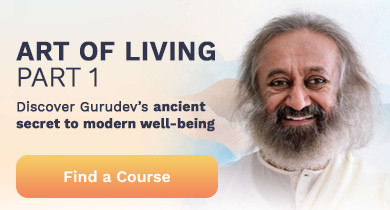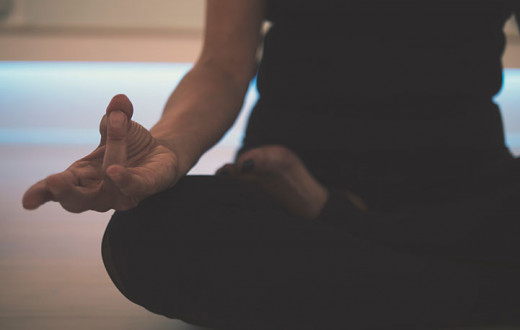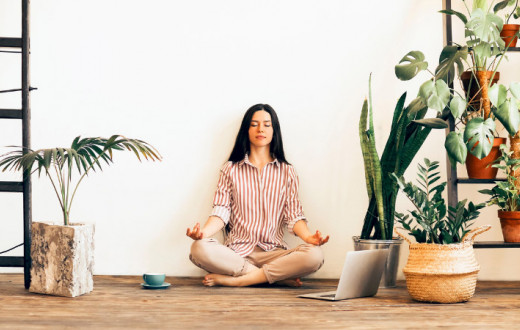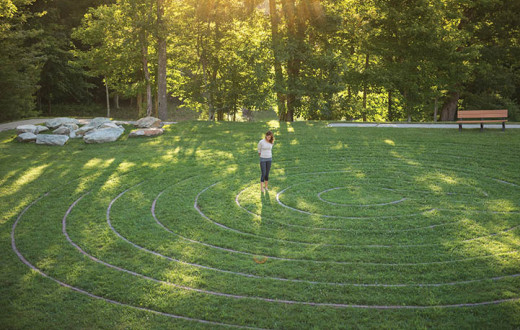
Yoga, pranayama breathing, and meditation have become buzzwords for mind-body wellness. Sometimes these terms are used interchangeably and many people are still trying to figure out how they are the same or different. Let us explore and also learn some basic techniques that you can learn by yourself and practice at home.
What is the difference between yoga, pranayama, and meditation?
Yoga means union: the union of body, mind, and spirit. Our breath is the connecting link between the three and it unites the three together in greater harmony to experience the oneness or wholeness of our being!
Yoga is an approach to health and wellbeing that promotes the harmonious collaboration of the human being's three components: body, mind, and spirit through the eight limbs of yoga as described in the Patanjali Yoga Sutras.
These 8 limbs are— Yama, Niyama, Asana, Pranayama, Pratyahara, Dharana, Dhyana, Samadhi.
While the word yoga is loosely connected with physical practices like the asana or poses; but pranayama and meditation are intrinsic parts of any complete yoga practice. Pranayama refers to yogic breathing practices and it deals with regulating your breathing. Meditation is a mental practice and refers to the higher state of your consciousness and deals with your mind. Some people use the term pranayama meditation! But they are separate practices, though both are related to each other.
Breath, mind, and pranayama
We all aspire for a calm, peaceful, steady, and focused mind. We have seen yogis and monks and perhaps even some of our friends and family exhibit that state of total serenity and bliss. How can we take our mind to a state that is unperturbed by the chaos that surrounds us in the form of stress, anxiety, work pressure, emotional conflicts, and inner dilemmas? Can we do it by simply telling ourselves to become calm or not be angry?
No. No, we can’t. I have tried and I am sure you have too!
Our mind and emotions are closely linked to prana or life force energy. When your prana or life force fluctuates, your mind also goes up and down through an emotional roller coaster. When your prana is low, you are likely to feel negative emotions like sadness, anger, heaviness, feeling of low, regret, and overall negativity. When your prana is high, you are bound to experience positive emotions like joy, enthusiasm, happiness, and a rush of high that comes from a source within.
What helps us increase our prana is pranayama-the secret lies in our breath! ‘Prana’ is the universal life force and ‘Ayama’ signifies regulation or extending or dimension. One of the ways we experience prana is by our breath.
Our breath connects the body and mind. Our emotions are closely linked to the way we breathe. You will be surprised to know that the way you breathe influences your state of mind and you can use your breath to improve the state of your mind!
Pranayama is the art of reversing this loop in our favor, to develop a say over our emotions and mind. When we start paying attention to our breath, when we regulate our breath, we come closer to a newer dimension within us which is peace and joy. They are one of the most effective ways to prepare your body and mind for deeper meditation.
Learn more about prana here.
3 simple yet powerful pranayama that you can learn and practice at home
Let us go over 3 simple and popular pranayamas. There are basic instructions to get you started. For the full benefits of each of these, it is advisable to learn them with a trained teacher.
1. Nadi shodhan pranayama or Alternate nostril breathing
Can't focus on the task at hand? Try Nadi Shodhan pranayama (Alternate Nostril Breathing), a breathing practice that immediately helps you feel calmer whenever you feel anxious or agitated.
How to do:
Sit with your spine erect, shoulders loose, and have a gentle smile on your face
Let your left hand be on your lap with the tip of your thumb and index finger lightly touching each other and other fingers folded into a light fist
Here are the three important touchpoints—the right index fingertip touches your forehead in between your eyebrows, the right thumb is placed on the side of the right nostril. The ring finger and little finger on your left nostril. These three fingers will work like lids to close or open the nostrils in the following instruction
Now, press the right thumb lightly against the right nostril, so no air can get in from that side. Breathe out and then take a breath in deeply from the left nostril
Close the left nostril with the ring finger
Taking a short pause, open the right nostril and breathe out gently and completely
Breath in from the right nostril. Open the left nostril and breathe out from the left nostril
This makes a single round of Nadi Shodhan
Practice at least for 5 minutes or 9 similar rounds of Nadi Shodhan pranayama
Benefits:
Most effective breathing technique to center the mind in just a few minutes
Calms and centers the mind by bringing the left and right hemispheres of the brain into harmony, which correlates with the logical and emotional sides of our personality. Learn here how
Regulates your body temperature
Improves sleep
Invigorates the nervous system
Improves focus and clarity of mind
Deepens your meditation or any other spiritual practice
After meditation practice, it helps for smooth transitioning, and to clear any toxins released during meditation
2. Bhrahmari or the humming breath
Is your mind buzzing with activity? Find a quiet corner and try the Humming Bee Breath (Bhramari Pranayama) to apply brakes in the buzzing mind.
How to do:
Sit up straight in a quiet, well-ventilated corner with your eyes closed. Keep a gentle smile on your face
Place the tip of your right index finger on your right ear cartilage and the tip of your left index finger on your left ear cartilage
Take a long and gentle breath in
While breathing out, press the cartilage gently, and make loud or high-pitched humming sounds like a bee
You can repeat this 5-7 times
Once you have repeated it, be in no hurry to open your eyes. Just observe the calm settle in
Gradually you can either open your eyes or continue to sit for a meditation practice of your choice
Benefits:
Relief from anxiety and restlessness or worry
Recommended for hypertension
Calms the agitated mind and prepares you for meditation
Recommended for those with migraines
Improves concentration and memory
3. Ujjayi or Ocean breath
More than any technique, Ujjayi (Victorious Breath) is a clear demonstration of the connection between our breath and emotions. In this, we create a snore-like sound in the throat as we inhale and exhale by constricting the back of our throat like in Darth Vader. Many use Ujjayi breathing during their asana practice.
How to do:
Learn from this video here or follow the following instructions.
For Ujjayi breathing, constrict the back of the throat slightly while breathing. You will be able to hear the movement of air in the back of the throat feebly as if it were the sea waves
Continue to breathe in and out through the nostrils in Ujjayi with your mouth closed; the breath is long and smooth
In Ujjayi, take full breaths such that when you inhale your chests expand and the belly expands, and when you exhale the stomach goes all the way in
Keep your eyes closed and observe the breath movement
Benefits:
Releases stress, anger and replaces them with calmness
Slows breath which is linked to longevity
Clarity of mind
Improves immunity
Better sleep
The sound draws and holds attention on the breath more easily, resulting in stress relief and emotional cleansing
Using ujjayi while practicing asanas, improves the depth of your practice as the mind is brought totally in the present moment by the breath. Also improves the stability of your posture
Just a few minutes of ujjayi breathing can empty your mind of worrying, repetitive, or negative thoughts and leave you calm, centered, and focused
The heat produced from ujjayi breath detoxifies internal organs
Learn some more pranayama and beginner’s tips as well as contraindications here.
Meditation: how pranayama helps
Pranayama in its basic essence prepares you for meditation. Meditation is the mindful art of doing nothing, which may be hard for many of us to do, given our constant impulse to act to achieve something. What makes it more effortless for us to meditate is pranayama. When the prana flows through the body-mind complex smoothly without resistance, you are likely to be more centered, meditate better and deeper. Pranayamas are a mechanism to eliminate the need for you to ‘focus’ or ‘concentrate’ to dive within yourself because breath as a tool is the most powerful and simplest of ways to unite the mind, body, and spirit in meditative awareness.
Here are some basic tips for meditation and its benefits to get you started.
If you are just dipping your toes into meditation, you may want to try some guided meditation from our Journey App. You may download it for free either from the App Store or Google Play.
Why do you need to learn these techniques from an instructor?
Like any form of art, you need proper guidance if you want to learn meditation or the art of right breathing.
How intensely should you breathe while practicing bee breath?
How do you examine if you are not exerting too much force on the back of your throat in ujjayi?
How to know if you are not pressing your right nostril too hard?
How to meditate after practicing pranayamas?
Or, how to handle thoughts during meditation?
All these kinds of questions can be best answered by a certified instructor that can guide you well.
What is the right sequence for yoga, pranayama, and meditation practice?
A general guideline for sequencing these practices is going from gross to subtle: so starting with yoga asana (poses) followed by pranayama and ending with meditation. Depending on how much time you have, you could allocate time for each practice. If you have one hour, 5-10 minutes of centering or cleansing or energizing breathing and warms ups to prepare for 20 minutes of asana, 10 minutes of relaxing pranayama, 20 minutes of meditation is a good sequence. Here is a nice 45 minutes sequence, give it a try. You will enjoy it.
Beyond pranayama: SKY Breath Meditation
SKY Breath Meditation takes you one step further in your exploration of pranayama and bridges the gap between breathwork and meditation. SKY, a unique yogic breathing practice, involves several types of cyclical breathing patterns, ranging from slow and calming to rapid and stimulating. Here is what modern research is saying about SKY and here is how it will benefit you in so many ways.
Learn more fun facts about breath and SKY at Beyond Breath
Breathe in and breathe out with us and get a first-hand experience of Bhastrika Pranayama and a guided meditation by joining our free online interactive session Beyond Breath! Reserve your free spot now!
Enjoy your pranayama and meditation practice!
Disclaimer: This content on the Art of Living Blog is not intended to be a substitute for professional medical advice, diagnosis or treatment. Always seek the advice of your physician or other qualified health providers with any questions you may have regarding a medical condition. Any links to third-party websites are provided as a convenience only and the Art of Living Blog is not responsible for their content.






























